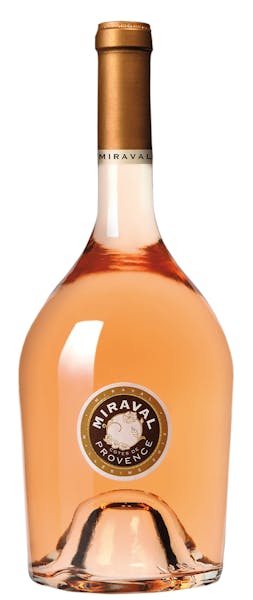Slowly, steadily, Twin Cities consumers have been finding it OK to drink pink. Once averse to something they associated with white zinfandel or the Mateus of their college days, something they had "left behind," many wine drinkers now are embracing rosés.
But as with all things vinous, they are confronted with too many choices, a baffling and fast-growing array of options from more countries than ever, crafted from more grapes than ever. The days of merely figuring out which Tavel to buy are long gone.
But also as with all things vinous, there are some handy shortcuts, starting with basic style.
The ever-wise local importer Annette Peters divides rosé into two realms: "the drier, paler and silvery style, and the darker, juicier, bon-bon style. People seem to like one or the other."
Since most rosés come in clear bottles, it's easy to find your preferred hue. A crowded shelf at a rosé-happy store such as Solo Vino or North Loop will display more shades of pink than a paint card from Home Depot, so novices can try two or three covering a wide spectrum. In general, lighter-looking wines are lighter-bodied wines.
Another approach is to go with the grape. Many if not most domestic labels name the grape(s), and quite often the region of imported bottles is a tipoff to the variety (mourvedre from Bandol, sangiovese from Tuscany, malbec from Argentina).
If you like pinot noir, try Robert Sinskey Vin Gris or Coppola's Sofia from California, Anne Amie, Raptor Ridge or Elk Cove from Oregon or Villa Wolf from Germany. Love syrah?
Go for Gustafson Family from California, Charles & Charles from Washington or Montes Cherub from Chile.
Name a red grape, and there's probably a tasty rosé made from it: tempranillo (Muga Rosado), zinfandel (Pedroncelli), malbec (Michel Torino), Montepulciano d'Abruzzo (Valle Reale) and even plavac (Korta Katarina).
Many of the best rosés are blends, usually with the grapes associated with the Rhône region of France — grenache, syrah, mourvedre, etc. Some of the best domestic versions (Bonny Doon "Vin Gris de Cigare," Robert Hall "Rosé de Robles," Shane) go this route.
Still, the epicenter for pink wine remains France, whose denizens drink as much rosé as white wine and account for a third of the world's consumption.
There are a bevy of swell introductions in the $12 range: P. Jaboulet Aine Parallèle 45, Villa des Anges, Domaine D'Arton Yse Rosé, Coteaux du Vendomois Lieu-dit-Cocagne and Chateau de Campuget Costieres de Nimes. For a few dollars more, a couple of Provençal offerings, Commanderie de la Bargemone and Triennes, are perennially stellar.
Which brings up a question: Is there vintage variation with rosés? Charles Bieler, who makes the delicious Bieler Pere et Fils in Provence and collaborates with Charles Smith on Washington's Charles & Charles, says yes, depending on the winemaking method.
During a recent tasting at Bryant-Lake Bowl, he said rosés made from the saignée method, in which juice is "bled off" from a red wine during or just after fermentation, is more subject to vintage whims. When the grapes are grown with the intent of making rosé (the prevailing practice in Provence), the results are more consistent, he said.
Peters, the local importer, also praised the "intentional rosé" process. "If the grower intends to make a rosé from the beginning," she said, "there is a different kind of attention given all the way from the vineyard to the bottle. For an intentional rosé, the producer considers what is optimal for making the most delicate, balanced and flavorful wine.
"The priorities are different for the red winemaker who makes a rosé from saignée. This winemaker is an opportunist because most of the time the practice of drawing the juice off the tank is a means to concentrate the red wine, and the drawn-off pink juice is the fortunate byproduct of this practice.
"Overall, I think the variables dished up by nature make every year different and sometimes challenging. But when the winemaker's priority is rosé, the variables are dealt with in a way that makes the best rosé possible in spite of the differences. And so, yes, they are often more consistent."
The bad news: Only a few wineries reveal on the label that they have gone the saignée route. The good news: Almost all the pink juice now on the shelves is from 2012, a stellar vintage throughout almost the entire wine world.
Time to have at it.
Bill Ward • 612-673-7643

Review: Sibling pop band AJR put on a fun show in St. Paul, but not a good concert
Israelis grapple with how to celebrate Passover, a holiday about freedom, while many remain captive
A Georgia beach aims to disrupt Black students' spring bash after big crowds brought chaos in 2023
Today in History: April 18, San Francisco's great earthquake sets off fires, thousands die

